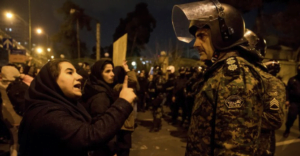
An analysis of the November 2019 Iranian revolt reveals vital truths about the Islamic Republic’s inability to suppress popular demand for regimes change.
The government anticipated the uprising would come if it raised gas prices, and it was correct. It announced the 300% hike abruptly in an effort to prevent the opposition from organizing.
Despite this, relatively small, spontaneous uprisings in cities across Iran shook the regime to its core, and for parts of two days, the regimes lost control in a number of cities and towns.
Large parts of Shiraz were freed from the regime’s authorities for more than one day. Witnesses there reported clashes between the Islamic Revolutionary Guard Corps (IRGC) and regular Army forces.
In Ghodes, protestors took over a base after it was abandoned by security forces. In Behbahan, citizens took charge of large areas after the murder of two citizens.
And troops retook Mahshahr only after employing heavy machine guns against unarmed civilians with a policy to shoot and kill. Nationwide, it took the regime three days and the murder of 1,500 people, according to Reuters, to regain control.
Yet, the protests were small in number if not in space. In total, demonstrations were held in some 719 locations.
The number of people at these locations was, however, between 50 and 500 persons only. So, on average, if we consider 200 people in each, fewer than 150,000 people participated nationwide, representing about a quarter of a percent of Iran’s population.
Also Read: IRGC: UAE-Israel Deal Historical Folly, Doomed to Failure

